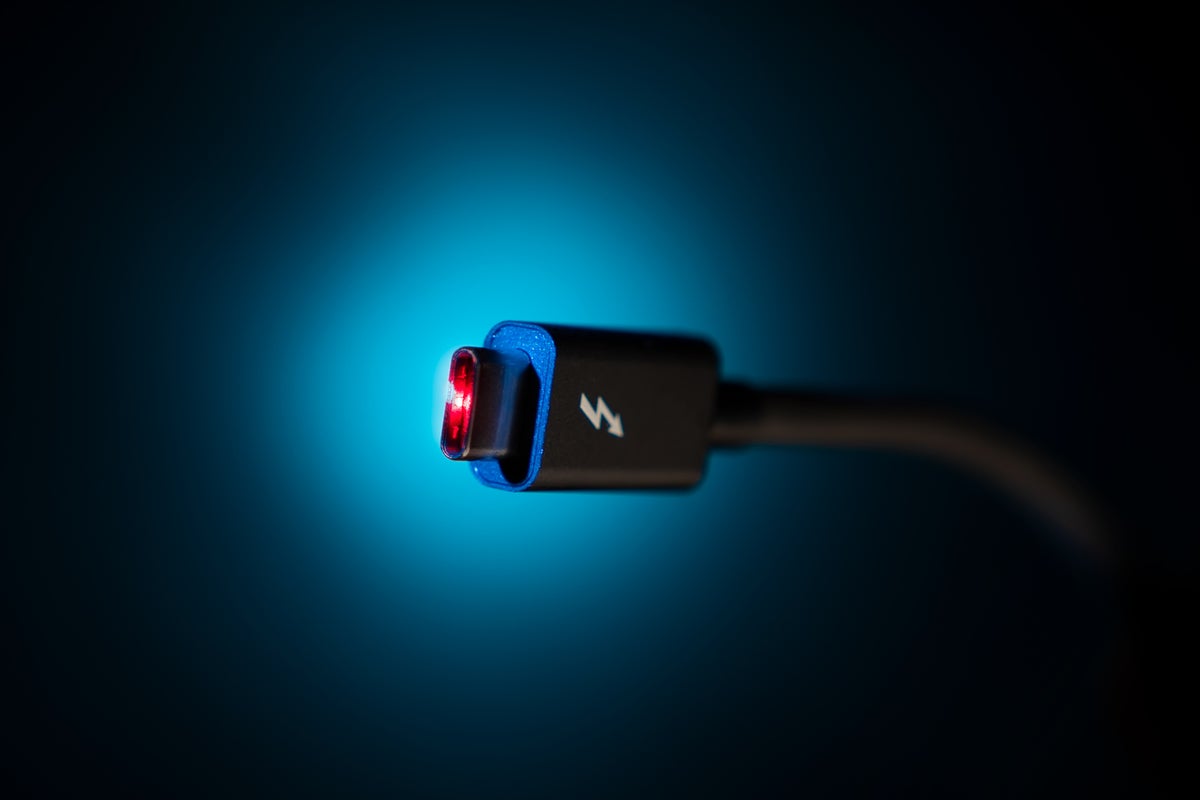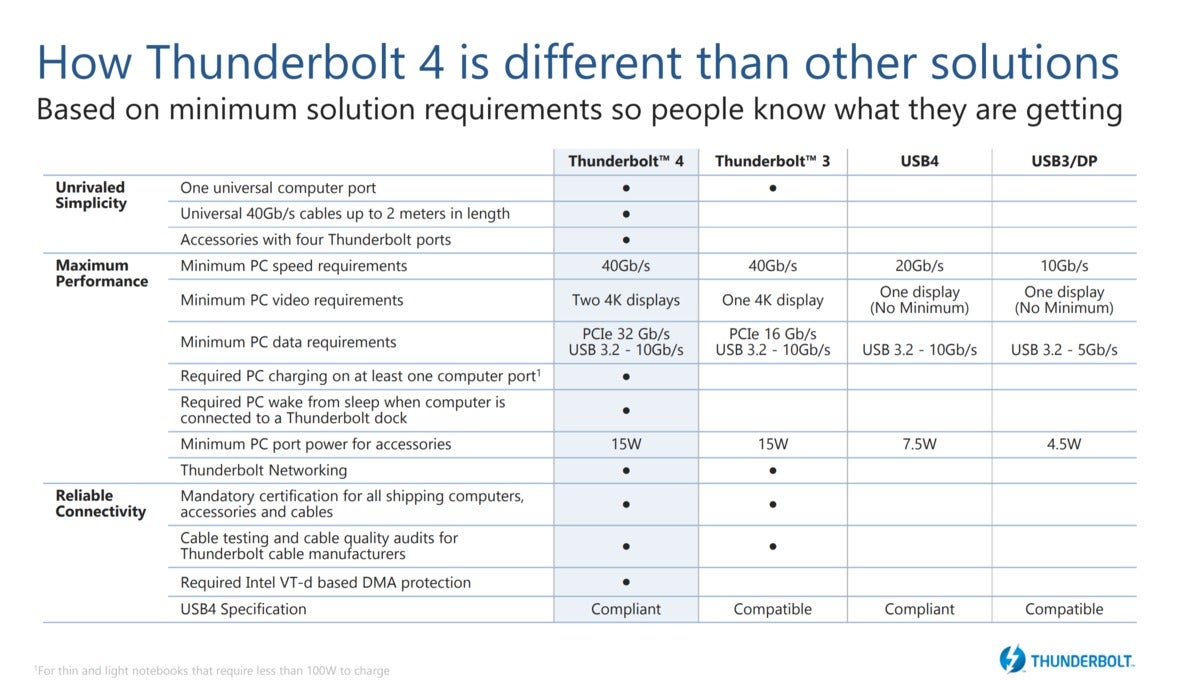Apple is migrating Macs from Intel to Apple Silicon. What does this mean when it comes to support for Intel’s all-new Thunderbolt 4 standard? Here’s what we think, know and imagine.
What is Thunderbolt 4?
Intel has introduced what it says is its “truly universal” Thunderbolt 4 I/O specification. At 40Gbps, it’s no faster than the existing Thunderbolt technology used by Apple, but it offers more capabilities and USB-4 spec compliance.
Intel argues that this is the most “future-proof” iteration of USB-C yet. It’s also hoping to introduce certified Thunderbolt 4 cables up to 50 meters long this year – a big improvement compared to the 2-meter length now supported.
Developer and certification kits for the new I/O are available now. Support for Thunderbolt 4 will be integrated into computers that run Intel’s upcoming Tiger Lake processors.
Other platforms will need to use Thunderbolt 4 8000 series host controllers, of which three are available: the JHL8540 and JHL8340 controllers for computers, and the JHL8440 for accessories.
What is it good for?
There are several advantages to Thunderbolt 4, but here’s a very quick tour:
- Longer cables
- Support for multiple 4K monitors.
- Date throughput of 32Gbps for storage speeds up to 3000MBps
- The ability to daisy chain multiple devices at full power via one connection.
- Accessories will support up to four Thunderbolt ports.
- PC charging on at least one computer port.
- These devices also have the ability to wake a PC from sleep when touching a connected keyboard or mouse.
What is the history of Thunderbolt?
Apple and Intel co-developed the standard. Work began in 2009. The first public demonstration of the technology – by then called “Light Peak” – took place at the Intel Developer Forum in September 2009, with Light Peak running on a modified Mac Pro
The standard made its computer debut when it appeared in the 2011 MacBook Pro. Today, you’ll find Thunderbolt in Macs, but not on any iOS device.
High-end iPad Pros use the fairly compatible but not-quite-the-same USB-C standard, and even the Apple Developer Transition Kit mac mini doesn’t feature an Thunderbolt port.
Apple is invested in the standard, though it isn’t clear whether it will continue to work with Intel on its future development, post-Apple Silicon.
Will Apple’s Apple Silicon Macs support Thunderbolt?
Yes.
Apple has released the following statement on the matter:
“Over a decade ago, Apple partnered with Intel to design and develop Thunderbolt, and today our customers enjoy the speed and flexibility it brings to every Mac. We remain committed to the future of Thunderbolt and will support it in Macs with Apple Silicon,” the company told The Verge.
Will Apple support Thunderbolt 4?
We don’t know for sure, but the company’s statement suggests it might. So, too, does the statement from Ben Thacker, vice president and general manager at long-term Mac accessory maker Kensington, as cited by Intel:
“We expect Thunderbolt 4 products to be an inflection point for accessory makers who depend on PCs and Macs to offer an industry-leading set of product capabilities for a consistent user experience,” Thacker said.
“The advancements in Thunderbolt 4 will help Kensington redefine the modern workspace of the future.”
What we think
So, we know what Thunderbolt 4 is and have an understanding of the conversational context around the migration to Apple Silicon. Here’s some additional notes:
- Apple helped develop the technology that has still not yet reached its maximum potential.
- Intel has promised Thunderbolt 4 will feature in thin and light laptops it believes will ship later this year.
- Apple has said it will continue to offer Intel Macs for the time being.
- It’s not impossible to assume Apple will offer a new Mac notebook with a Tiger Lake processor.
- In the event it does so, it is unlikely to want to also offer Apple Silicon devices that seem to have less functionality than their Intel siblings.
- If Apple chooses to support Thunderbolt 4 on Intel Macs, it is therefore unlikely to eschew it on Apple Silicon machines.
- Intel offers the components to let Apple achieve just this.
Put these fragments together and it’s easier to believe Apple will introduce Thunderbolt 4 support than to believe it won’t.
One more thing
The matter raises another question: Many Apple watchers are becoming concerned that in the move to Apple Silicon the company may also abandon support for external GPUs.
If, however, as seems likely, the company elects to deploy Thunderbolt support in these Macs, then what challenges exist to finding a software solution that enables third-party eGPUs to support future Macs?
Is there some way to use the power of an external GPU to support the Tile Based Deferred Rendering systems those Macs will use?
Or will the move to Apple Silicon spell the end to external GPU’s?
Please follow me on Twitter, or join me in the AppleHolic’s bar & grill and Apple Discussions groups on MeWe.



